Frederic Joseph DeLongchamps was an American architect. He was one of Nevada's most prolific architects, yet is notable for entering the architectural profession with no extensive formal training. He has also been known as Frederick J. DeLongchamps, and was described by the latter name in an extensive review of the historic importance of his works which led to many of them being listed on the U.S. National Register of Historic Places in the 1980s.

Fort Churchill State Historic Park is a state park of Nevada, United States, preserving the remains of a United States Army fort and a waystation on the Pony Express and Central Overland Routes dating back to the 1860s. The site is one end of the historic Fort Churchill and Sand Springs Toll Road. The park is in Lyon County south of the town of Silver Springs, on U.S. Route 95 Alternate, eight miles (13 km) south of U.S. Route 50. Fort Churchill was designated a National Historic Landmark in 1961. A 1994 park addition forms a corridor along the Carson River.
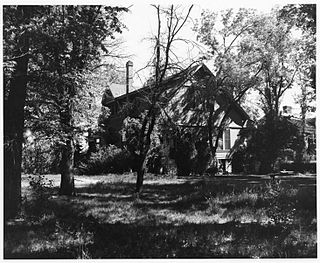
The Francis G. Newlands Home is a historic house at 7 Elm Court in Reno, Nevada, United States. Built in 1890, it is the former mansion of United States Senator Francis G. Newlands (1846-1917), a driving force in passage of the 1902 Newlands Reclamation Act. It was declared a National Historic Landmark in 1963 and listed on the National Register of Historic Places in 1966. The house is privately owned and is not open to the public.
Contents:National Register of Historic Places listings in Carson City, Nevada, USA:

St. Peter's Episcopal Church is a large historic Carpenter Gothic Episcopal church building located at the corner of Division and Telegraph streets in Carson City, Nevada. Built in 1868, it is the oldest Episcopal church still in use in Nevada. On January 3, 1978, it was listed on the National Register of Historic Places.

The Sears–Ferris House, at 311 W Third Street in Carson City, Nevada, is a historic house built in 1863. It was owned from 1868 to 1890 by George Washington Gale Ferris Sr., father of George Washington Gale Ferris Jr., future inventor of the Ferris wheel. It has also been known as the G. W. G. Ferris House.
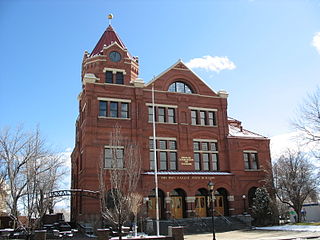
The Carson City Post Office is a historic building in Carson City, Nevada built from 1888 to 1891. It was designed by architect Mifflin E. Bell. It was listed on the National Register of Historic Places in 1979.
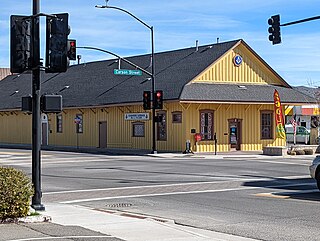
The Virginia & Truckee (V&T) Railroad Depot of Carson City, Nevada is a historic railroad station that is listed on the U.S. National Register of Historic Places (NRHP). It is significant for its association with the economically important role of the V&T railroad historically in Carson City following discovery of the Comstock Lode mine in 1859. To a lesser degree, according to its NRHP nomination, the depot building is also significant architecturally "as a well-preserved example of a wood-frame passenger depot procured from a railroad company pattern book within the V&T's former sphere of operation."
George A. Ferris & Son was an architectural firm in Reno, Nevada, consisting of partners George Ashmead Ferris (1859-1948) and his son Lehman "Monk" Ferris (1893-1996). The partnership lasted from just 1928 to 1932; both father and son however were individually prominent.

The Belknap House, at 1206 North Nevada Street in Carson City, Nevada, is a historic house built in 1875. Also known as the Barber-Belknap House or the Beck-Barber-Belknap House, it includes Second Empire architecture. It was listed on the National Register of Historic Places in 1997.

The Olcovich–Meyers House, at 214 W. King St. in Carson City, Nevada, is a historic, well-preserved house that was built during 1874–75 with Late Victorian architecture. It was listed on the National Register of Historic Places in 1993. The listing included two contributing buildings.

The Carson City Civic Auditorium, at 813 N. Carson St. in Carson City, Nevada, was designed by architect Lehman A. Ferris and was built during 1938–39. It was funded by a municipal bond and by the Public Works Administration. Also known simply as Municipal Auditorium, it was listed on the National Register of Historic Places in 1990. Since 1994, the building has served as the location for the Children's Museum of Northern Nevada.

The Leport–Toupin House, at 503 E. Telegraph St. in Carson City, Nevada, is a historic simplified-Second Empire-style house that was built in 1879. It was converted to a pre-school in 1969. Also known as the Hawkins House, it was listed on the National Register of Historic Places in 1985.

The Lew M. Meder House, at 308 N. Nevada St. in Carson City, Nevada, United States, is a historic house with Late Victorian architecture that was built in 1876. It was listed on the National Register of Historic Places in 1978.
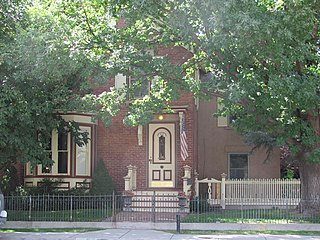
The William Spence House, at 308 S. Thompson St. in Carson City, Nevada, was built in 1875. It includes Greek Revival architecture. It was listed on the National Register of Historic Places in 1985.

The David Smaill House, at 313 W. Ann St. in Carson City, Nevada, was built in c.1876. Also known as the Smaill House, it was listed on the National Register of Historic Places in 1985.

The Carson City Public Buildings, on Carson St. in Carson City, Nevada is a set of historic buildings dating back to 1920. There are three contributing buildings. The set was listed on the National Register of Historic Places in 1987. The three are the Nevada State Supreme Court Building, the Ormsby County Courthouse, and the Heroes Memorial Building, designed by Nevada premier architect Frederick J. DeLongchamps.

The Foreman–Roberts House, formerly the James D. Roberts House and now also known as the Foreman–Roberts House Museum, is a historic house and museum located at 1217 N. Carson St. in Carson City, Nevada. The house was built in 1859 and was moved to the present location in 1873. Known also as the Thurman Roberts House for the last member of the Roberts family, it is listed on the National Register of Historic Places. It is the headquarters of the Carson City Historical Society and is open to the public by appointment and for special events.
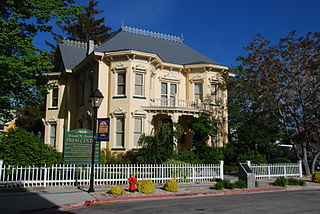
The Rinckel Mansion is a historic house in Carson City, Nevada, United States, that is listed on the National Register of Historic Places (NRHP).

The St. Charles-Muller's Hotel, at 302-304-310 S. Carson St. in Carson City, Nevada, is a historic hotel built in 1862. It has also been known as the St. Charles Hotel and as the Pony Express Hotel. It includes vernacular Italianate architecture.



















